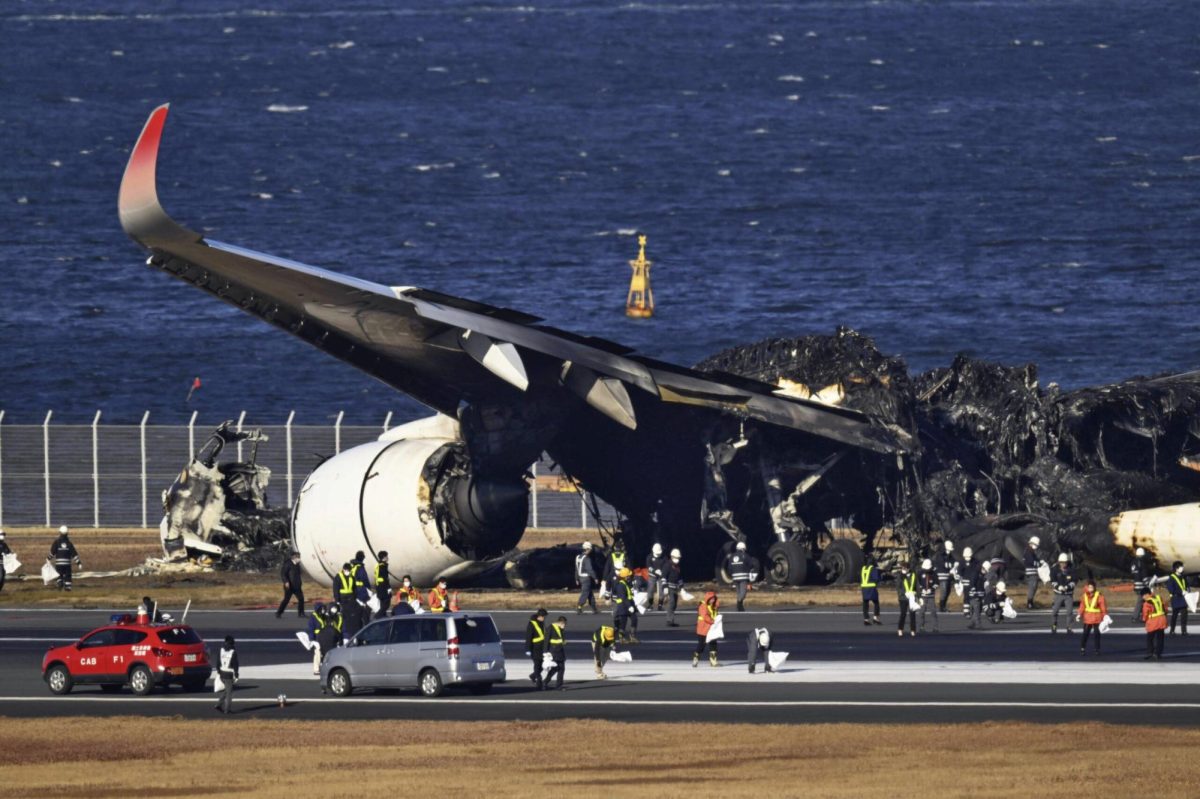After Japan was devastated by a powerful earthquake on January 1, relief efforts to deliver aid led to another fatal incident at Haneda Airport in Tokyo. According to Reuters, on Tuesday, January 2, a coast guard aircraft carrying six passengers and aid for earthquake victims collided with a passenger jet as it commenced its flight. While all 379 passengers and crew on the jet miraculously survived, five of the six onboard the aircraft died in the wreckage.
Upon collision, both aircrafts slowly turned ablaze before either aircraft could comprehend the situation. The smaller coast guard aircraft was engulfed by flames, resulting in the loss of all occupants except for the unnamed crew’s captain, who is currently in the hospital after sustaining severe injuries from the crash. Meanwhile, careful precautions were implemented on the Japanese Airlines (JAL) passenger jet to ensure a full survival. Within a swift 20 minutes, everyone on the plane was evacuated outside to safety.
According to Reuters, after all the passengers exited the plane, Tsubasa Swada, a survivor of the crash, recalled that “[she] heard an explosion about 10 minutes after [everyone] got off the plane.” If the escape had been even 10 minutes delayed, the incident would have ended with far more deaths and casualties.
“It was a miracle that all the passengers got off,” Paul Hayes, director of air safety at UK-based aviation consultancy Ascend said in The Guardian.
As further investigations are being conducted to understand the lethal incident, a recent transcript released by Japan’s Ministry of Transport reveals that explicit instructions to land were issued to the JAL passenger jet. However, Reuters describes that an official report from Japan’s Civil Aviation Bureau explains that the coast guard aircraft had not been cleared for takeoff. Additionally, the transcript reveals that the coast guard plane had responded to air traffic control prior to the crash with the statement, “Taxi to holding point C5 JA722A No.1. Thank you.”
Although the coast guard aircraft’s captain is primarily being held responsible for the situation, there is a belief that the incident was a result of an error on the flight crew’s part.
“There’s a strong possibility there was a human error,” Hiroyuki Kobayashi, a former JAL pilot and aviation analyst, said in his interview with Reuters. “Only one plane is generally allowed to enter the runway, but even though landing clearance had been given, the Japan coast guard aircraft was on the runway.”
The police have yet to determine whether the crash was a result of the captain’s incompetence or a consequence of the flight crew’s faults. Nevertheless, the cooperation of the crew and passengers helped avert a critical crisis and brought a moment of relief to Japan that was shaken by the earthquake.














































































































































